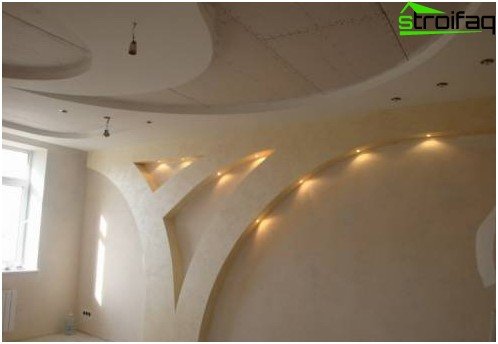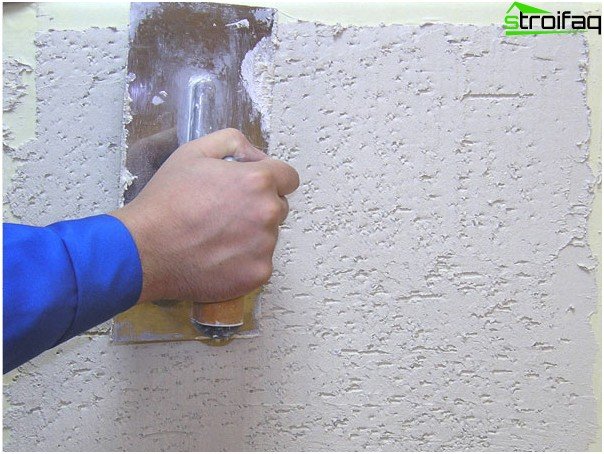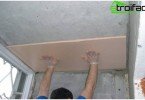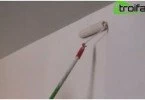How to plaster drywall
Plasterboard sheets are one of the most popular finishing materials available to most consumers at a price, as well as allowing to achieve excellent results in a very short time. At the same time, many novice masters have a question about the need for further processing of the surface of the sheathed walls with plaster. There is no single answer, as the opinions of professional finishers were divided. In this case, no one is against applying decorative plaster to the drywall walls. Therefore, the question of how to plaster drywall correctly remains relevant for many people who started repairs and conduct it with their own hands.
Content
- Drywall Plastering Tips
- Elimination of surface irregularities
- Using decorative plaster
- How to plaster drywall: progress
Drywall Plastering Tips
If you plan to use plaster for wall decoration from drywall, then listen to the following tips:
- at the stage of purchasing materials for repair, choose moisture-resistant sheets that are specially marked;
- use without fail special primers with the ability to penetrate deeply;
- apply plaster to problem areas (small dents or bumps) with thin layers several times, while do not forget to give the previous layer time to dry completely;
use all kinds of decorative plasters for finishing gypsum plasterboard, while strictly adhering to the recommendations for its application given by the manufacturer in the instructions.

How to drywall plasterboard
Elimination of surface irregularities
It is allowed to seal small dents and potholes that appeared on the drywall sheets in case of improper storage, violations of transportation rules, as well as small errors made during installation. In this case, the surface is first primed, then a putty layer is applied and a little later a thin layer of plaster. It should be remembered that the putty layer should not exceed three millimeters. If the depth of the pothole is greater, then plaster is indispensable..
Using a thick layer of plaster is not recommended to hide frame mounting errors that lead to the appearance of obvious wall irregularities. This will, of course, allow you to hide for some time the marriage, but over time, the drywall sheets will not withstand the weight of the applied plaster. This will be expressed in their deformation, the appearance of cracks, peeling of the plaster layer. Therefore, when detecting large distortions, it is better to immediately correct installation errors by replacing sheets with defects with high-quality material.
Using decorative plaster
Drywall transfers the effect of special types of decorative plaster, which can be safely applied to its surface with a thin layer, after priming it. The most popular are granular stone materials, differing in varying degrees of fineness and color, which can be of natural or artificial origin. There are two ways to apply granular coatings:
- ready-to-use paste mixtures are applied to the prepared surface using a trowel or spray; the thickness of the layer depends on the diameter of the grains, exceeding it in one and a half to two times;
- dry colored stone chips with a spray applied on the surface of drywall, pre-lubricated with a mastic adhesive.

Application of decorative plaster
How to plaster drywall: progress
- Having finished the installation of drywall sheets, clean their surface from settled dust. The industrial vacuum cleaner copes with this task perfectly. In its absence, use improvised means. A rag that needs to be slightly moistened in water is suitable..
- Putty bumps, seams and joints. After the mixture has hardened in these places, cover the entire wall with a leveling layer..
- Apply a primer suitable for drywall surfaces. Manufacturers generally recommend suitable primers. Choosing a primer for moisture-proof drywall.
- Start applying decorative plaster.
Important! These works are carried out at moderate humidity and plus temperature (+ 5 ° to + 35 ° C). It is necessary to use rubber gloves and a respirator (gauze bandage).
After finishing work, wash the entire tool thoroughly, close the remains of the used finishing materials tightly in jars and put them in storage in a dry room. Perhaps sometime they will be useful for the restoration of damaged decorative coatings.
Depending on the type of decorative plaster, the variant of its application depends.
Thus, from the foregoing, we can conclude that not all drywall is suitable for plastering. It is advisable to purchase moisture-resistant drywall, but even it is necessary to protect it with deeply penetrating primer solutions. Do not apply too thick a layer of leveling plaster, otherwise the repair result will disappoint you. Nothing and no one prevents the use of decorative plasters for wall decoration from drywall. Therefore, experiment and make your home the most comfortable and original..






